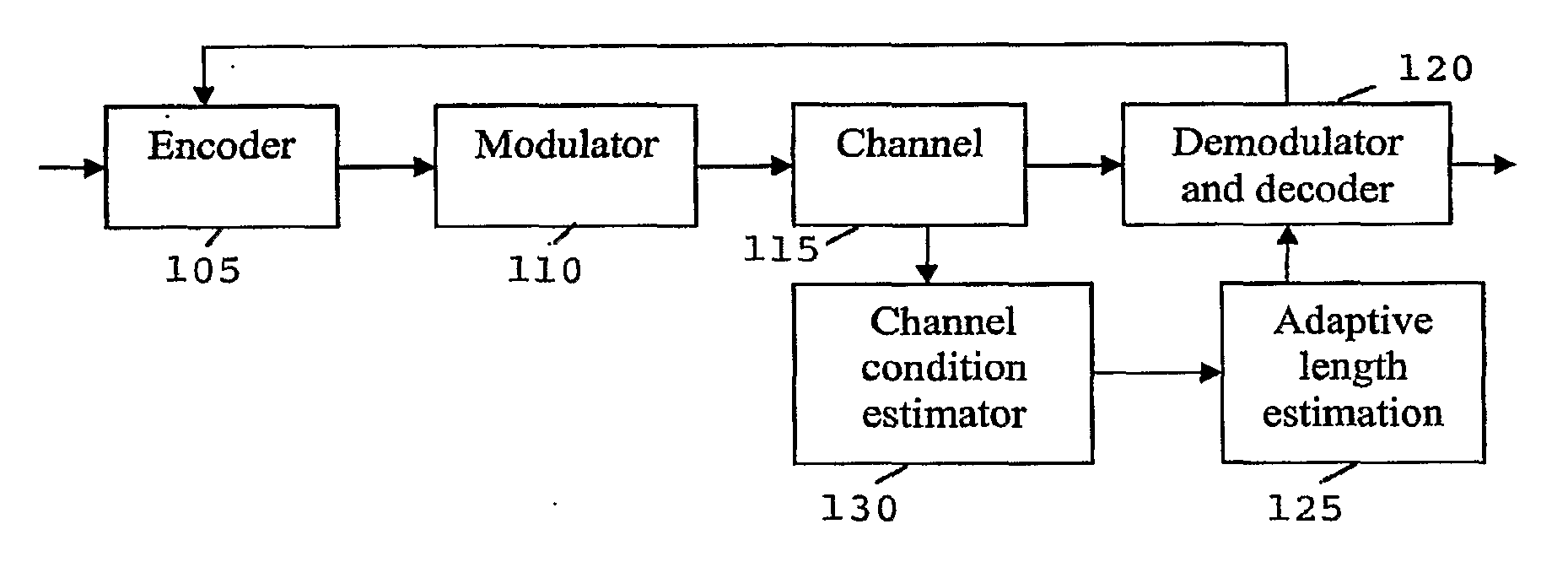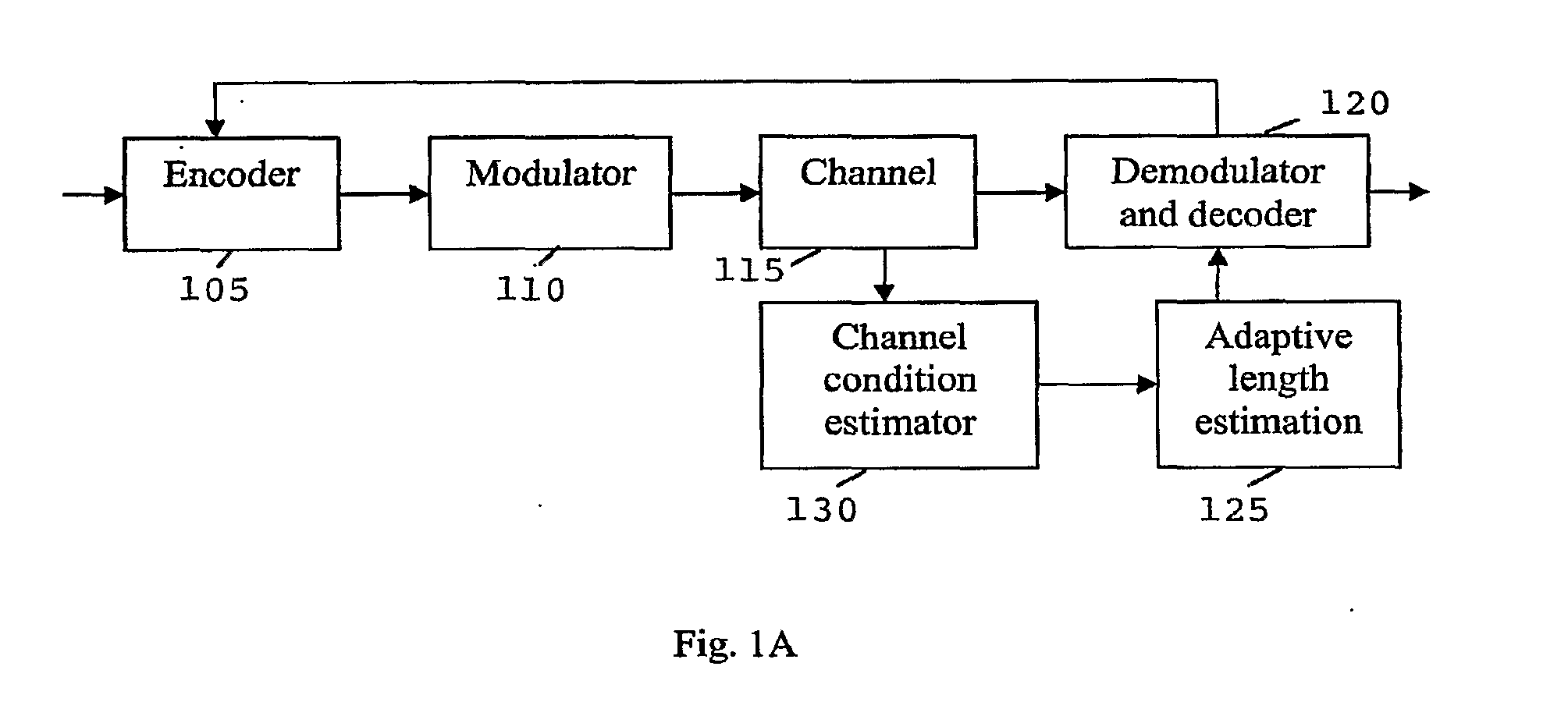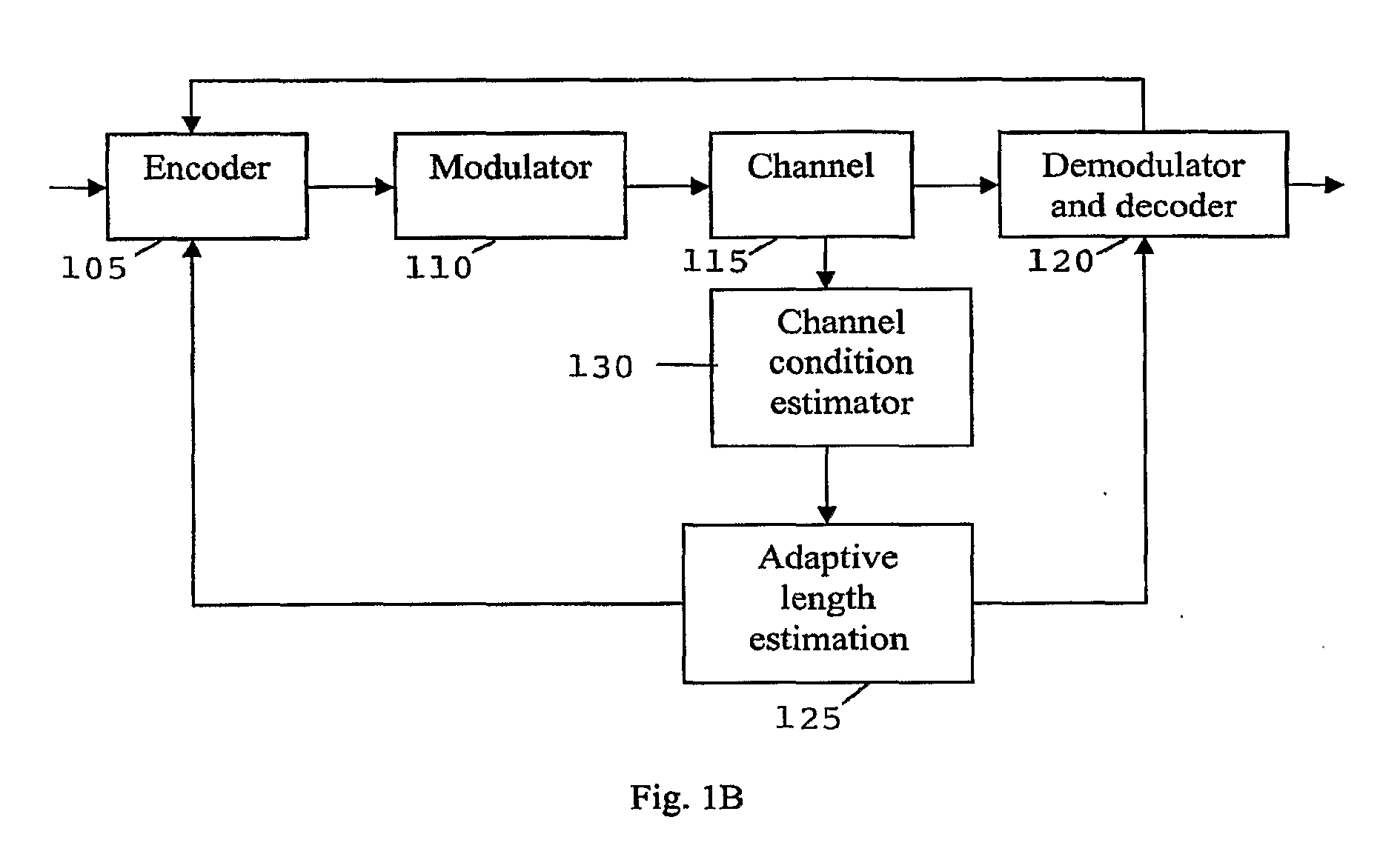Method and apparatus for improving throughput and error performance of rateless coding systems
a rateless coding and error performance technology, applied in the field of coding schemes, can solve the problems of communication system giving up, error performance suffers, communication system has to give up, etc., and achieves the effects of improving throughput and error performance, saving transmitter power, and increasing the probability of successful decoding
- Summary
- Abstract
- Description
- Claims
- Application Information
AI Technical Summary
Benefits of technology
Problems solved by technology
Method used
Image
Examples
Embodiment Construction
[0034]For an (N, K) code, N coded bits are used to represent K information / data bits by adding redundancy to the coded bits. K / N is defined as the code rate, which is usually specified for a block code or a convolutional code.
[0035]Unlike block codes or convolutional codes, the rate is unspecified in rateless codes. Given K information bits, the rateless code encoder generates coded bits by randomly selecting some bits from the given information / data bits and performing certain operations (usually an exclusive-or) on them. The encoder continues generating coded bits until the decoder is able to successfully decode the encoded data / information or the deadline is reached and an error occurs. The ability of the decoder to decode the encoded information / data bits is determined by the encoder based on the length estimation, which is, in turn, based on the channel conditions. Channel conditions can be estimated through training signals. For example, training signals having training data c...
PUM
 Login to View More
Login to View More Abstract
Description
Claims
Application Information
 Login to View More
Login to View More - R&D
- Intellectual Property
- Life Sciences
- Materials
- Tech Scout
- Unparalleled Data Quality
- Higher Quality Content
- 60% Fewer Hallucinations
Browse by: Latest US Patents, China's latest patents, Technical Efficacy Thesaurus, Application Domain, Technology Topic, Popular Technical Reports.
© 2025 PatSnap. All rights reserved.Legal|Privacy policy|Modern Slavery Act Transparency Statement|Sitemap|About US| Contact US: help@patsnap.com



